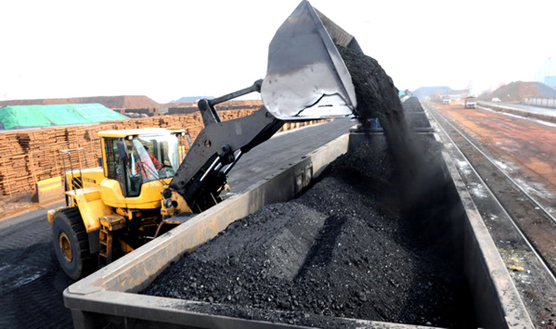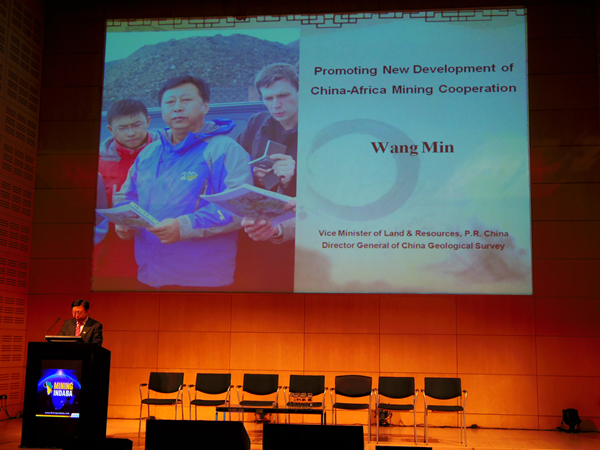Major rare earth group formed in S China
Source: www.chinamining.org Citation: Xinhua Date: Apr.08, 2013
A major rare earth production corporation has been formed in east China`s Jiangxi Province as part of efforts to boost the industry`s sustainable development.
The state-owned Ganzhou Rare Earth Group Co., Ltd., based in the city of Ganzhou, was founded through the merging of its key subsidiary Ganzhou Rare Earth Mineral Industry Co., Ltd. and some local rare earth companies, including Longnan Wanbao Rare Earth Co.
Thirty-six percent of China`s middle and heavy rare earth reserves are in Ganzhou, which has experienced overexploitation since the end of the 1970s.
"From now on, Ganzhou will step up efforts to facilitate the merging and restructuring of the rare earth industry," said Liu Jianping, vice mayor of Ganzhou.
As the only prospector in Ganzhou,the group will be involved in rare earth mining, smelting, processing and trade.
In 2012, the sales revenues of the rare earth industry in Ganzhou reached 34 billion yuan (about 5.44 billion U.S. dollars), acccounting for one-third of the industry`s revenues nationwide, according to Ma Rongzhang, secretary-general of the China Rare Earth Industry Association.
As the world`s largest rare earth supplier, China serves more than 90 percent of global demand for rare earth metals, a group of 17 elements that are necessary to manufacture high-tech products ranging from flatscreen TVs to lasers and hybrid cars.
However, the country holds only 23 percent of the world`s rare earth reserves. Decades of excessive exploitation have greatly damaged the environment.
In January, the Ministry of Industry and Information Technology (MIIT), along with 11 other authorities, said in a guideline that the government is encouraging mergers in the auto, steel, cement, shipbuilding, electrolytic aluminum, rare earth, electronic information, pharmaceutical and agriculture sectors.
The government will slash the number of rare earth firms through mergers and concentrate production capacity, the guideline says.
China`s top rare earth producer, the Inner Mongolia Baotou Steel Rare-Earth (Group) Hi-Tech Co., announced last December that it would gain control of another 12 rare earth firms in order to form a megacompany.
About CHINA MINING
Since first held in 1999, the scope and influence of CHINA MINING has grown rapidly year by year. As a global mining summit forum and exhibition, CHINA MINING Congress and Expo has become one of the world’s top mining events, and one of the world’s largest mining exploration, development and trading platforms, covering all aspects of the whole mining industry chain, including geological survey, exploration and development, mining rights trading, mining investment and financing, smelting and processing, mining techniques and equipment, mining services, etc. playing an active promotion role in creating exchange opportunities and enhancing mutual cooperation between domestic and foreign mining enterprises.
CHINA MINING Congress and Expo 2013 will be held at Meijiang Convention and Exhibition Center in Tianjin on November 2-5, 2013. We invite you to join the event and to celebrate the 15th anniversary of CHINA MINING with us. For more information about CHINA MINING 2013, please visit: www.chinaminingtj.org.


 [Photo / China Daily]The Liangyungang Coal Wharf in Jiangsu province. A legislator has called for more policies to encourage greener exploration of coal to improve energy efficiency and reduce pollution.
A legislator has called for more policies to encourage greener exploration of coal in an attempt to improve energy efficiency and reduce pollution.
"Society is now striving to stop extravagance on the dinner table, but what should draw more attention is energy waste," said Bu Changsen, chairman of Shandong Energy Group, the country`s second-largest coal producer.
Bu, also a deputy to the country`s top legislature, said energy waste is extremely severe in the coal production process, which also discharges a large amount of solid waste and dust.
He said coal burning generates 70 percent of the emissions of suspended particulate matter, a major source of air pollution in China.
[Photo / China Daily]The Liangyungang Coal Wharf in Jiangsu province. A legislator has called for more policies to encourage greener exploration of coal to improve energy efficiency and reduce pollution.
A legislator has called for more policies to encourage greener exploration of coal in an attempt to improve energy efficiency and reduce pollution.
"Society is now striving to stop extravagance on the dinner table, but what should draw more attention is energy waste," said Bu Changsen, chairman of Shandong Energy Group, the country`s second-largest coal producer.
Bu, also a deputy to the country`s top legislature, said energy waste is extremely severe in the coal production process, which also discharges a large amount of solid waste and dust.
He said coal burning generates 70 percent of the emissions of suspended particulate matter, a major source of air pollution in China.

